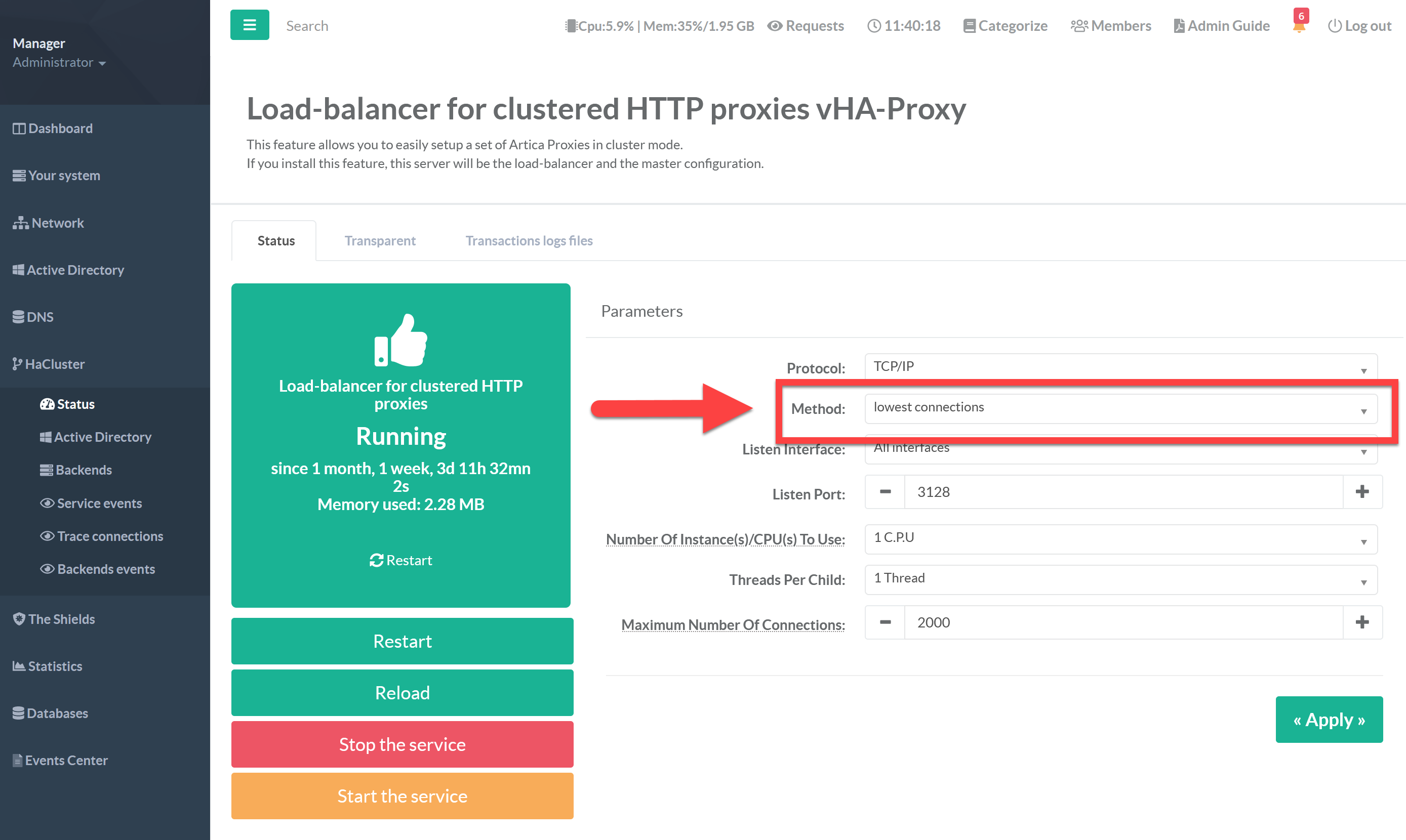The HaCluster “Status” section allows you to chosse different methods for the balancing policy

¶ Lowest connections
The server with the lowest number of connections receives the connection.
Round-robin is performed within groups of equally loaded servers to ensure that all servers are used.
The use of this algorithm is recommended when very long sessions are expected.
but is not well suited to protocols that use short session.
This algorithm is dynamic, which means that the weights of the servers can be adjusted on the fly in case of a slow start, for example.
It also takes into account the number of queued connections in addition to established connections in order to minimize queues.
¶ Strict Hashed IP
The source IP address is hashed and divided by the total weight of the running servers to designate the server that will receive the request.
This ensures that the same client IP address will always reach the same server as long as no server drops or rises.
If the hash result changes due to a change in the number of running servers, many clients will be directed to a different server.
This algorithm is generally used on the Internet to provide the best possible adherence to clients who refuse session cookies.
¶ Round-Robin
Each server is used in turns, according to their weights.
This is the smoothest and fairest algorithm when the server's processing time remains equally distributed.